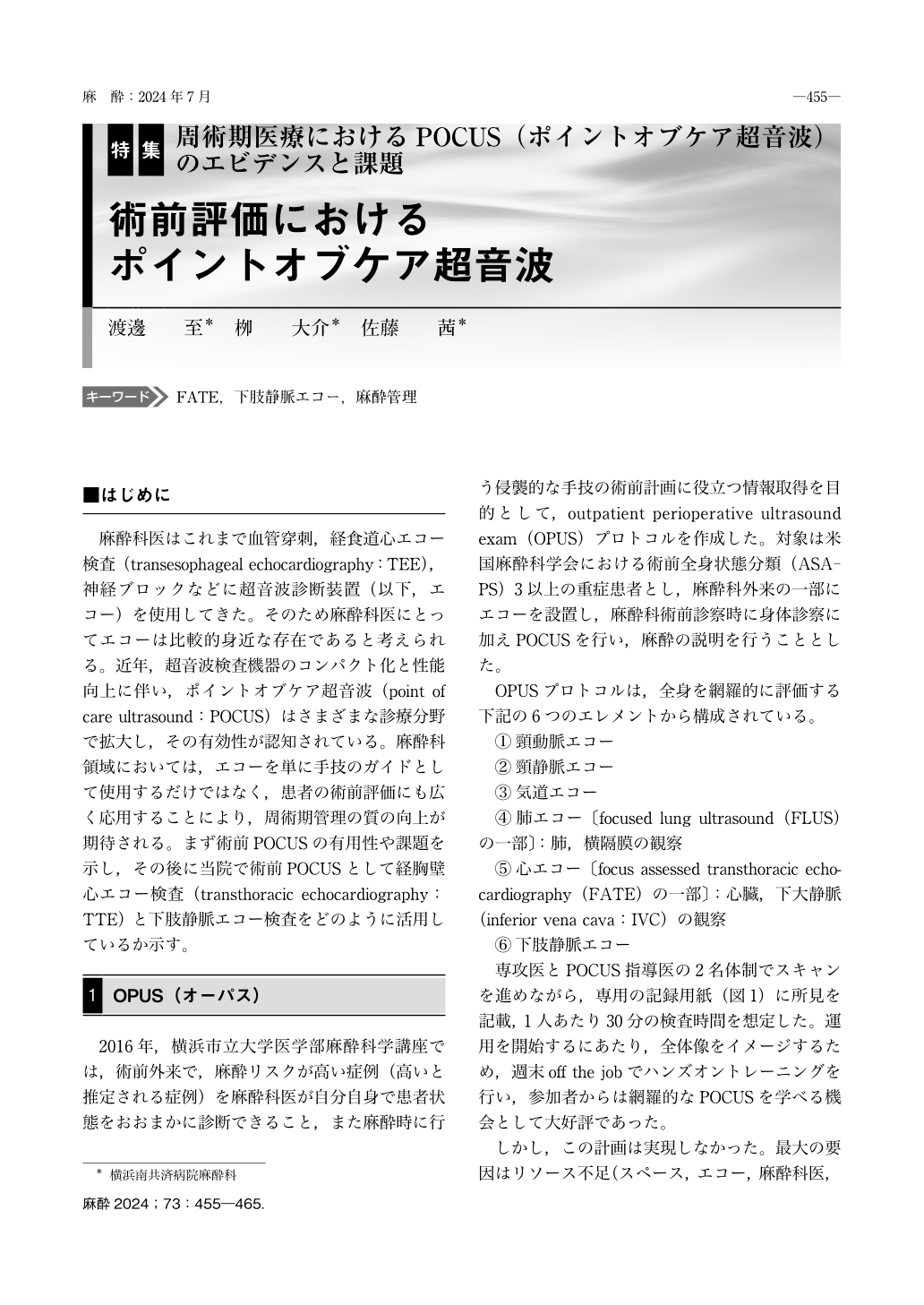Japanese
English
- 有料閲覧
- Abstract 文献概要
- 1ページ目 Look Inside
- 参考文献 Reference
はじめに
麻酔科医はこれまで血管穿刺,経食道心エコー検査(transesophageal echocardiography:TEE),神経ブロックなどに超音波診断装置(以下,エコー)を使用してきた。そのため麻酔科医にとってエコーは比較的身近な存在であると考えられる。近年,超音波検査機器のコンパクト化と性能向上に伴い,ポイントオブケア超音波(point of care ultrasound:POCUS)はさまざまな診療分野で拡大し,その有効性が認知されている。麻酔科領域においては,エコーを単に手技のガイドとして使用するだけではなく,患者の術前評価にも広く応用することにより,周術期管理の質の向上が期待される。まず術前POCUSの有用性や課題を示し,その後に当院で術前POCUSとして経胸壁心エコー検査(transthoracic echocardiography:TTE)と下肢静脈エコー検査をどのように活用しているか示す。
Anesthesiologists have traditionally used ultrasound machines for vascular punctures, transesophageal echocardiography(TEE), and nerve blocks. In recent years, as ultrasound machines have become more portable and their performance has improved, point of care ultrasound(POCUS)has expanded to a variety of medical fields, and its effectiveness has been recognized. In the field of anesthesiology, it is expected that the quality of perioperative management will improve by not only using echocardiograms to guide procedures but also widely applying echocardiograms to preoperative evaluations of patients. In this chapter, we will discuss two methods of preoperative POCUS:transthoracic cardiac ultrasound and lower-limb venous ultrasound. We will introduce the usefulness and challenges of these POCUS methods as well as their specific uses at our hospital.

Copyright © 2024 KOKUSEIDO CO., LTD. All Rights Reserved.


